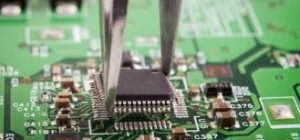Introduction
Surface Mount Technology (SMT) is a key process in PCB production, revolutionizing the way electronic components are mounted onto printed circuit boards. In this article, we’ll explore the intricacies of SMT and its significance in modern PCB manufacturing.
Understanding SMT
Definition
SMT is a method of assembling electronic components onto the surface of a printed circuit board (PCB) without drilling holes through the board. Instead, components are mounted directly onto the surface of the PCB, allowing for higher component density and smaller form factors.
Components Used
SMT components are typically smaller and lighter than through-hole components, making them ideal for compact electronic devices. Common SMT components include resistors, capacitors, integrated circuits (ICs), diodes, and transistors.
SMT Process
Stencil Printing
The SMT process begins with stencil printing, where solder paste is applied to designated areas of the PCB using a stencil. The stencil ensures precise deposition of solder paste onto the pads where components will be mounted.
Pick and Place
Next, a pick and place machine accurately picks up individual SMT components from reels or trays and places them onto the solder paste pads on the PCB. High-speed pick and place machines can place thousands of components per hour with remarkable precision.
Reflow Soldering
After components are placed, the PCB enters a reflow soldering oven, where it undergoes a controlled heating process. The solder paste reflows, creating solder joints between the components and the PCB pads. This soldering process ensures secure electrical connections and mechanical stability.
Inspection
Once soldering is complete, the PCB undergoes inspection to detect any defects or misaligned components. Automated optical inspection (AOI) systems and X-ray inspection equipment are commonly used to identify soldering defects, component placement errors, and other anomalies.
Advantages of SMT
Higher Component Density
SMT allows for higher component density on PCBs, enabling the design of smaller and more compact electronic devices. This is particularly advantageous in applications where space is limited, such as mobile phones, tablets, and wearables.
Improved Electrical Performance
SMT components offer better electrical performance compared to through-hole components due to shorter interconnection paths and reduced parasitic effects. This results in improved signal integrity, lower electromagnetic interference (EMI), and higher operating frequencies.
Conclusion
Surface Mount Technology (SMT) has revolutionized PCB production by enabling the assembly of smaller, lighter, and more efficient electronic devices. With its advantages in component density, electrical performance, and manufacturing efficiency, SMT plays a pivotal role in modern PCB manufacturing. To learn more about SMT and PCB production, visit SMT.
